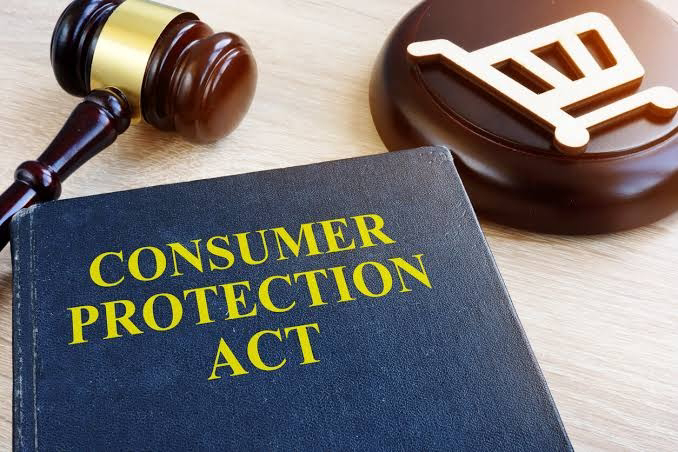Passing Off,Infringement and Exceptions to Infringement Actions, (ss27-30, s34) ( trade mark)
Trademark law plays a crucial role in protecting the rights of businesses and consumers alike. Passing off, infringement, and exceptions to infringement actions are fundamental concepts within this legal framework. This article explores the provisions of Sections 27-30 and Section 34 of the Trade Marks Act 1994 to analyse these concepts, their requirements, and their implications for trademark owners.
Passing off occurs when a person or business misrepresents their goods or services as those of another, leading to confusion among consumers. To establish a passing off claim, the trademark owner must demonstrate three elements: goodwill, misrepresentation, and damage. Goodwill refers to the reputation and recognition associated with the trademark, while misrepresentation involves creating a false impression of affiliation. Damage refers to the harm caused to the trademark owner's business or reputation due to the misrepresentation. The burden of proof lies with the plaintiff to demonstrate these elements (Cornish, Llewelyn & Aplin, 2013). Trademark infringement occurs when a third party unlawfully uses a trademark that is identical or similar to an existing registered trademark for similar goods or services. Section 10 of the Trade Marks Act 1994 provides guidance on determining infringement. Factors such as the similarity of the marks, likelihood of confusion, and dilution of distinctive character are taken into account. Infringement can result in legal remedies, including injunctions and damages (Kerly's Law of Trade Marks and Trade Names, 2019).
Exceptions to Infringement Actions:
Section 11 of the Trade Marks Act 1994 outlines several exceptions to infringement actions. These exceptions include the use of a trademark in relation to goods obtained from a trademark owner, the use of an individual's own name or address, and the use of descriptive terms in a non-trademark sense. Furthermore, Section 12 provides exemptions for honest descriptive use, fair use, and use in comparative advertising. These exceptions serve to promote fair competition, prevent monopolies, and balance the rights of trademark owners and other businesses. Trademark law has witnessed notable developments in recent years. Courts and legislatures around the world have adapted to address the challenges posed by evolving technologies and online platforms. These developments include the recognition of non-traditional trademarks, such as sounds or colors, and the consideration of factors like internet domain names and social media presence in assessing trademark infringement (Reiss & Reiss, 2018).
Landmark Judgments:
Landmark judgments have significantly shaped the interpretation and application of passing off, infringement, and exceptions to infringement actions. For instance, the Supreme Court of India's decision in Dabur India Limited & Anr. v. Emami Limited & Anr. clarified the essential elements of passing off and the burden of proof required for establishing goodwill, misrepresentation, and damage (Supreme Court of India, 2019). Such judgments provide valuable guidance to trademark owners, businesses, and courts in resolving trademark disputes. Passing off, infringement, and exceptions to infringement actions are critical aspects of trademark law that seek to protect the rights of trademark owners and maintain fair competition. The provisions outlined in Sections 27-30 and Section 34 of the Trade Marks Act 1994 play a significant role in safeguarding trademarks and preventing confusion among consumers. Recent developments in trademark law reflect the evolving nature of commerce and technology. Landmark judgments have contributed to the interpretation and application of these legal provisions. By understanding and effectively utilising these concepts, businesses can protect their valuable intellectual property and ensure fair competition in the marketplace.
References:
1. Cornish, W. R., Llewelyn, D. J., & Aplin, T. (2013). Intellectual Property: Patents, Copyright, Trademarks and Allied Rights. Sweet & Maxwell.
2. Kerly's Law of Trade Marks and Trade Names. (2019). Sweet & Maxwell.
3. Reiss, N. D., & Reiss, H. F. (2018). Protecting Your Company's Intellectual Property: A Practical Guide to Trademarks, Copyrights, Patents & Trade Secrets. Praeger.
4. Supreme Court of India. (2019). Dabur India Limited & Anr. v. Emami Limited & Anr. Civil Appeal Nos. 3415-3416 of 2019. Retrieved from https://main.sci.gov.in/supremecourt/2019/9774/9774_2019_1_1502_16949_Judgement_15-Jan-2021.pdf
5. Trade Marks Act 1994. Retrieved from http://www.legislation.gov.uk/ukpga/1994/26/contents
Author:- Samar Singh, a Student of Bihar Institute of Law, Patna.




![Freedom of Speech in India [Indian Supreme court and Law of Sedition]](https://blogger.googleusercontent.com/img/a/AVvXsEiGLLUmLKq5Da6xDZplasOZHKRj-jOhWPkoeuy0_Eq757tUpOiHz-xooXwIlAjF0-hmBfi-TtMIv6on_sVgBXVq4wbWwnbsqLOcNX22S8C2aSq-ZuK3vn9wWAx8tXByYOBfwc0hs6b8RJV84YNFG2greouGKjup6g8kN-xVlchW33VHdSSmrhLC1BUEVbGp=w680)





